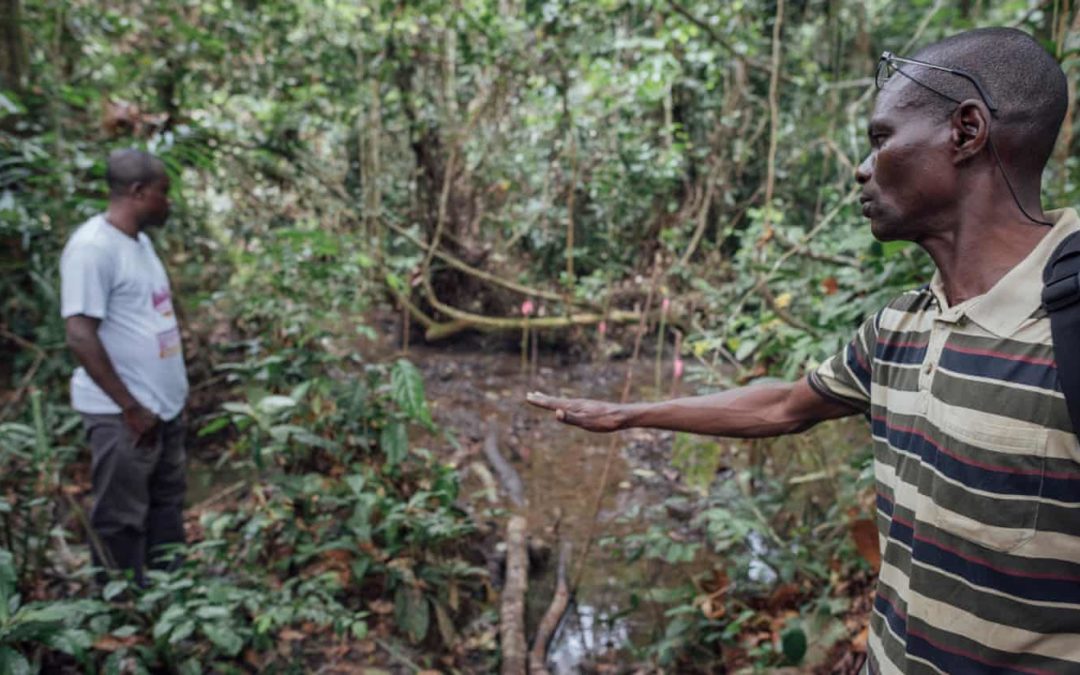SOURCE: The Guardian
DATE: February 28, 2020
SNIP: The world’s largest tropical peatlands could be destroyed if plans go ahead to drill for oil under the Congo basin, according to an investigation that suggests draining the area would release the same amount of carbon dioxide as Japan emits annually.
Preserving the Congo’s Cuvette Centrale peatlands, which are the size of England and store 30bn tonnes of carbon, is “absolutely essential” if there is any hope of meeting Paris climate agreement goals, scientists warn.
However, this jungle is now the latest frontier for oil exploration, according to an investigation by Global Witness and the European Investigative Collaborations network that questions claims by developers that the oil deposit could contain 359m barrels of oil.
The Cuvette Centrale forms part of the Congo basin, which is the world’s second largest tropical forest and one of the most remote areas in the world. This untouched region is waterlogged for most of the year and is an important habitat for endangered forest elephants and lowland gorillas.
In 2017 it made headlines after scientists announced the discovery of 145,500 sq km (56,200 sq miles) of peatlands. They estimated it stored the equivalent of three years of global fossil fuel emissions, making it one of the greatest carbon sinks on the planet, according to a paper published in the journal Nature.
But in August 2019, a Congolese company called Petroleum Exploration and Production Africa (Pepa) announced there were hundreds of millions of barrels of oil under the Cuvette Centrale. Exploiting this resource would quadruple the country’s oil production and sort out its debt-ridden finances, the company claimed.
Two of the four potential underground reservoirs are directly under carbon-rich peatlands, according to analysis of publicly available data from researchers at the University of Leeds.

